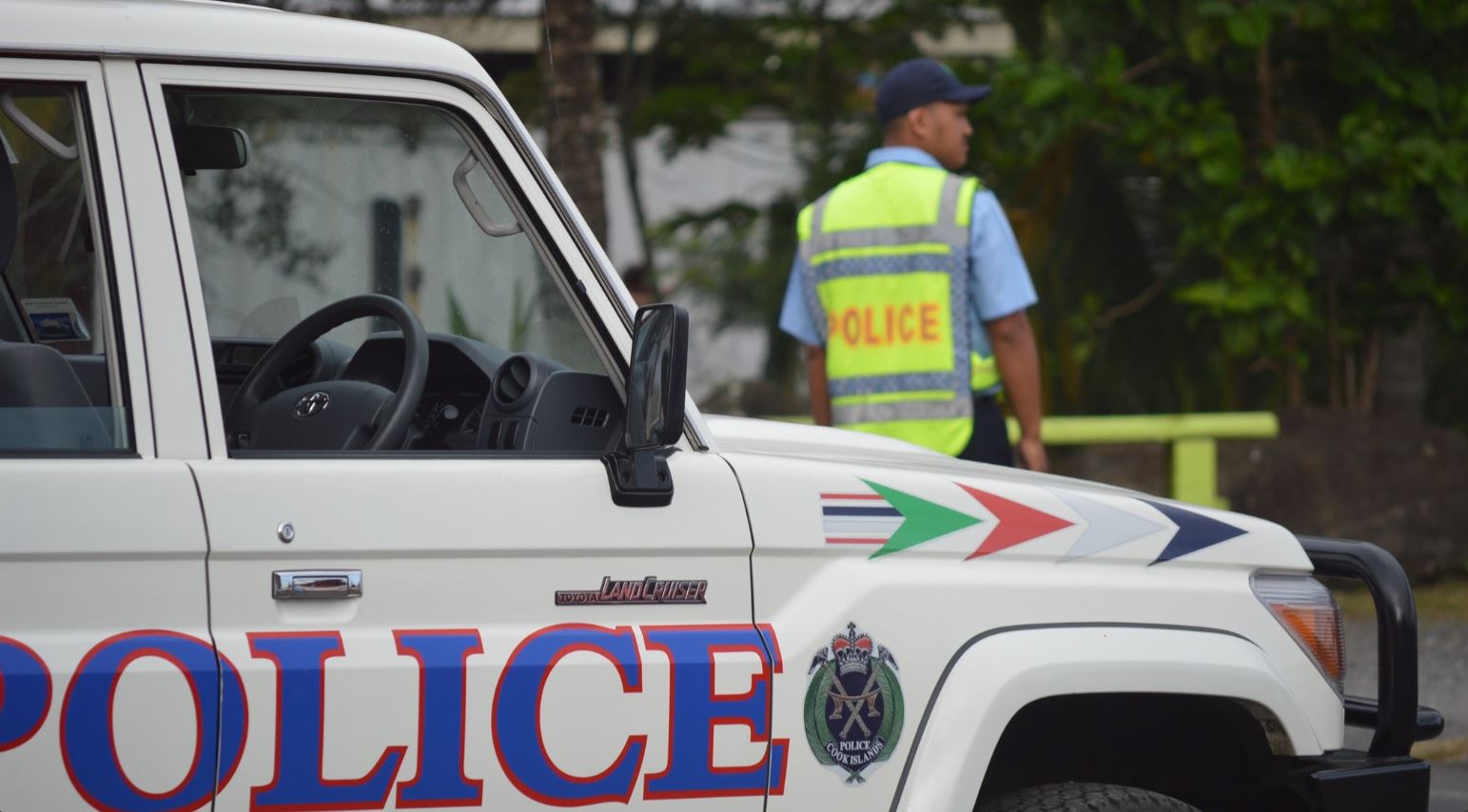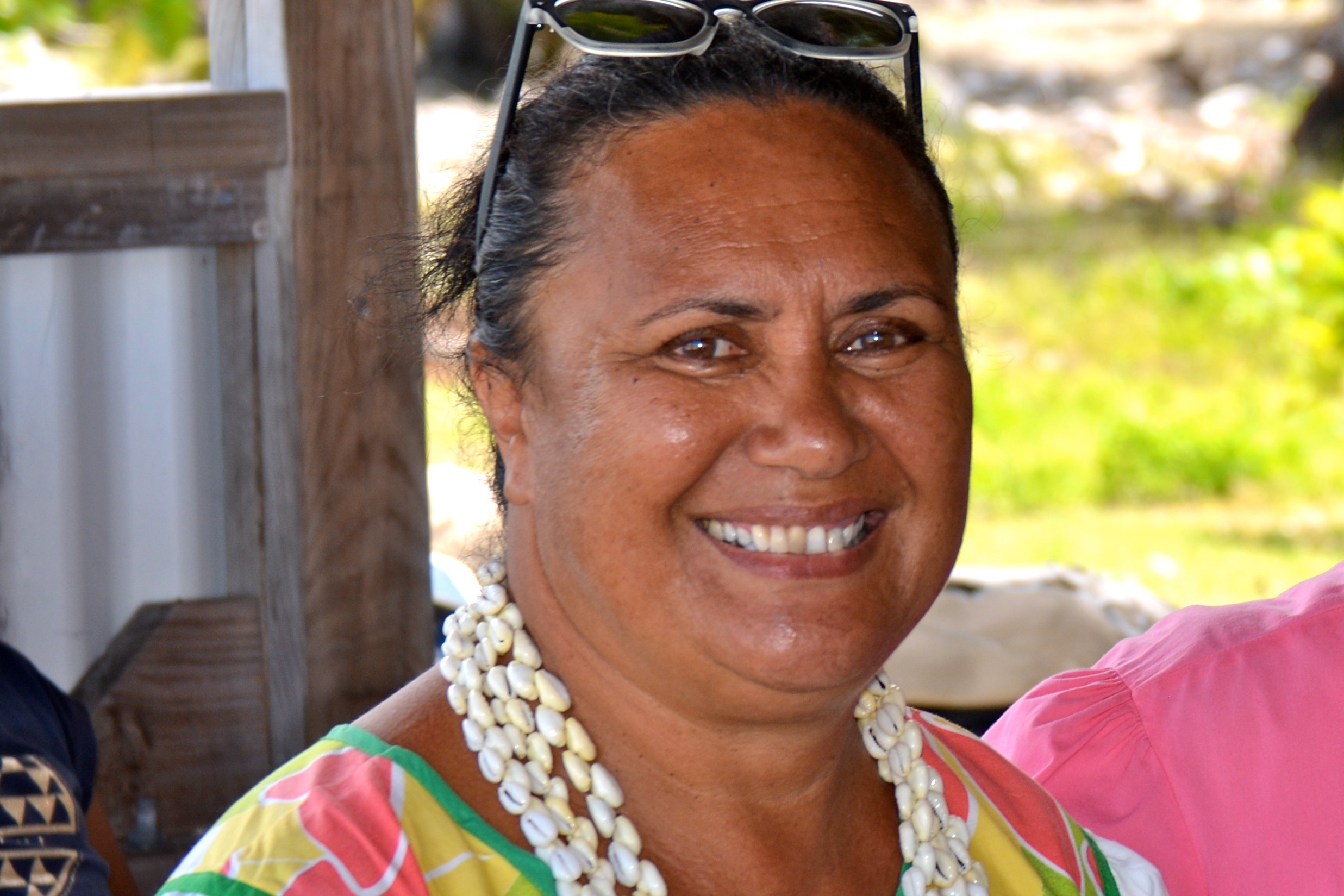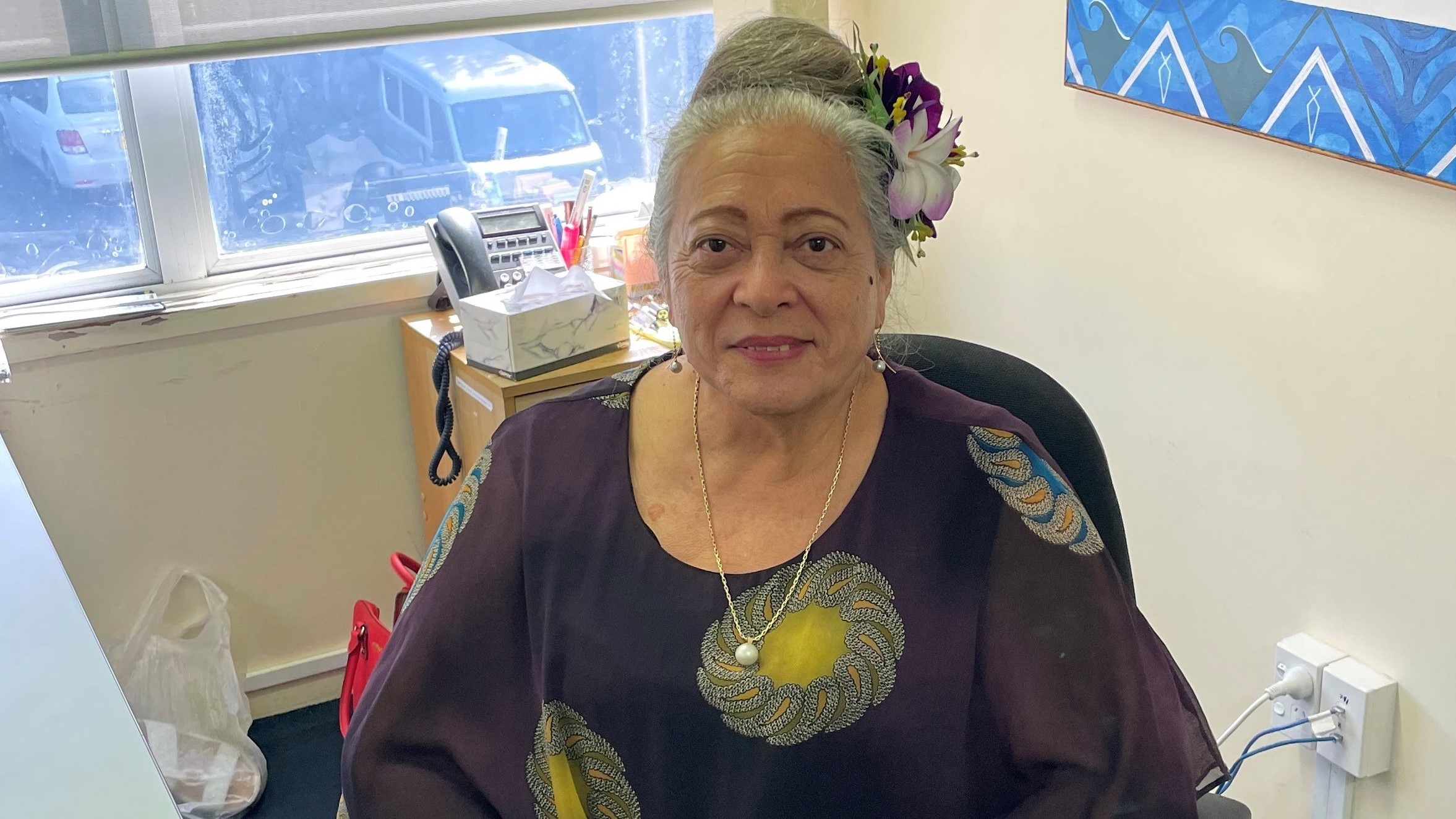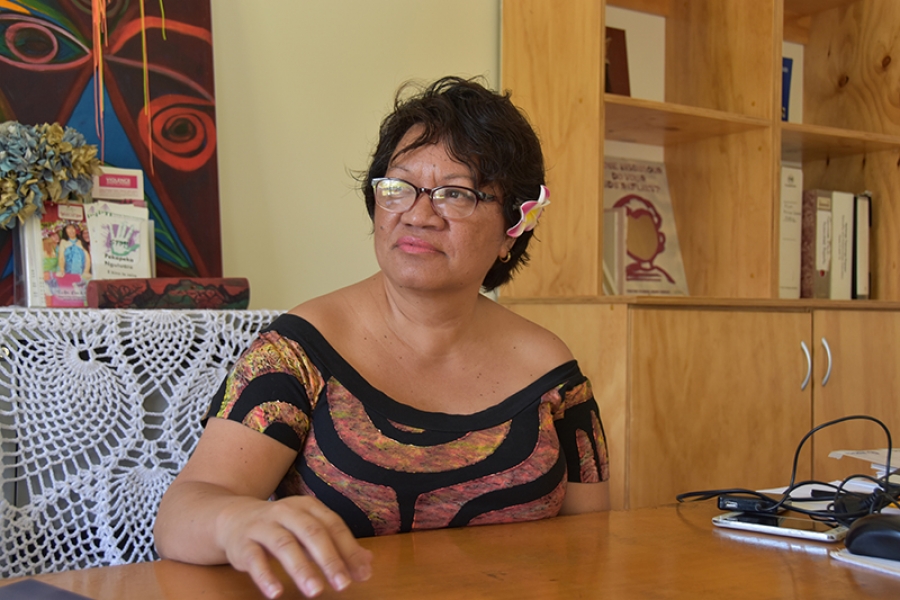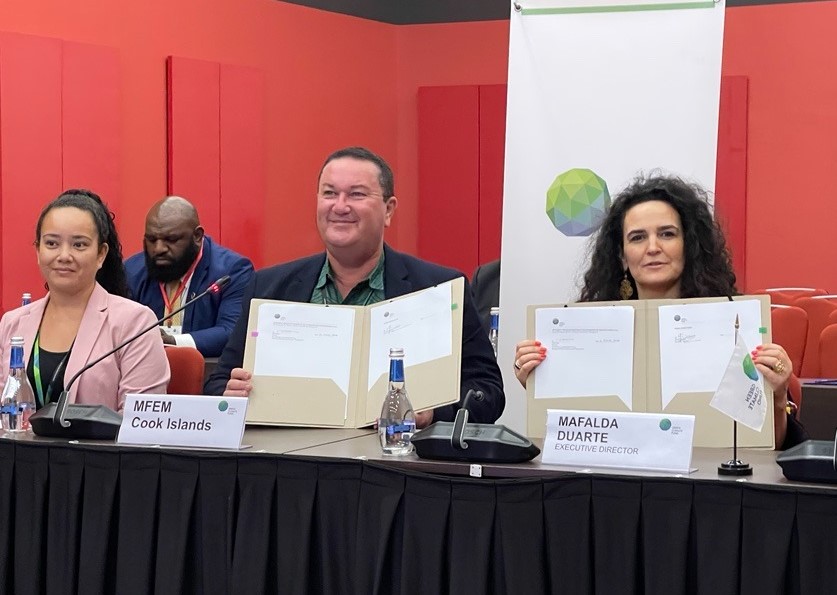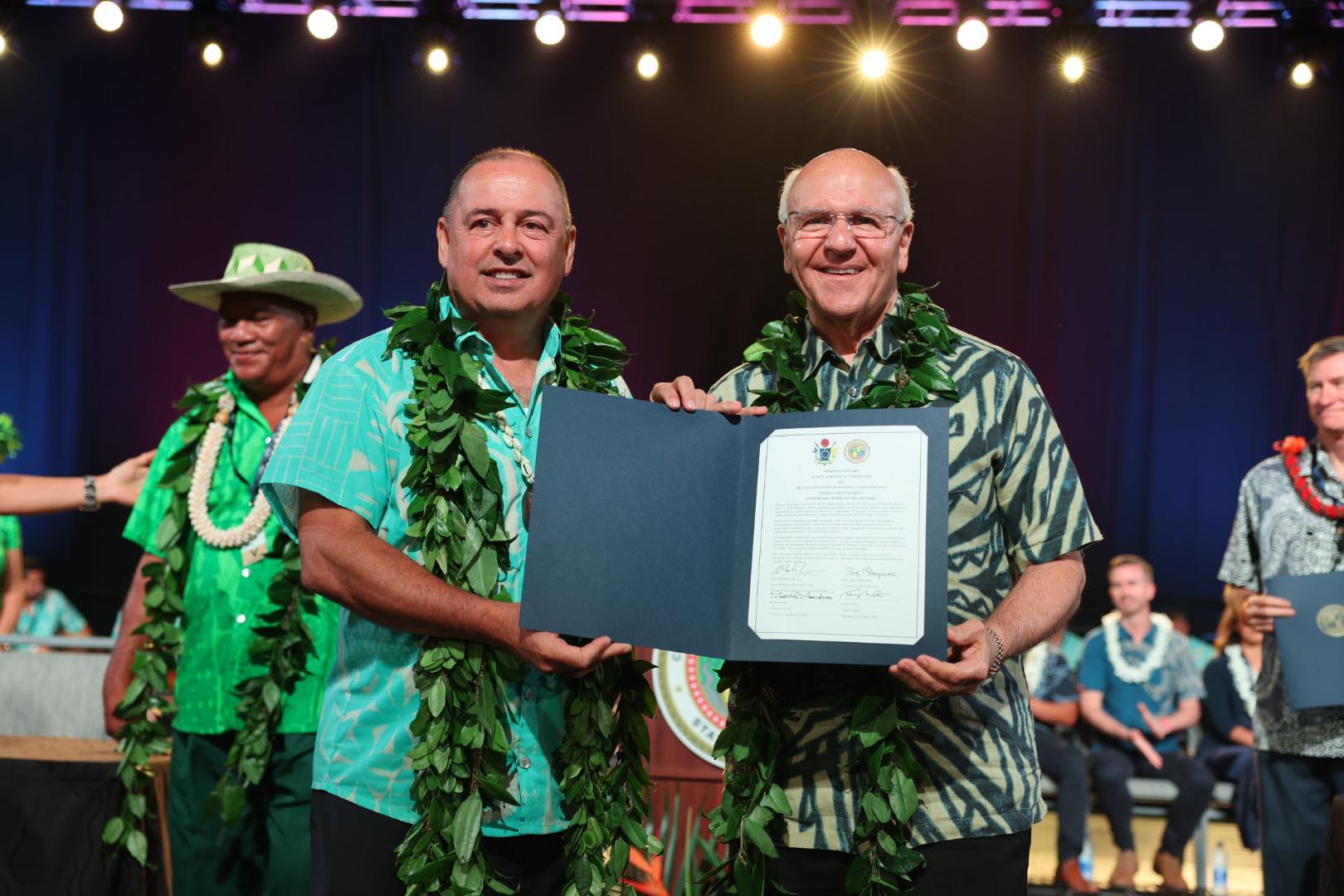Teachers under pressure as Covid-19 hits Raro schools
Saturday 26 March 2022 | Written by Caleb Fotheringham | Published in Education, National
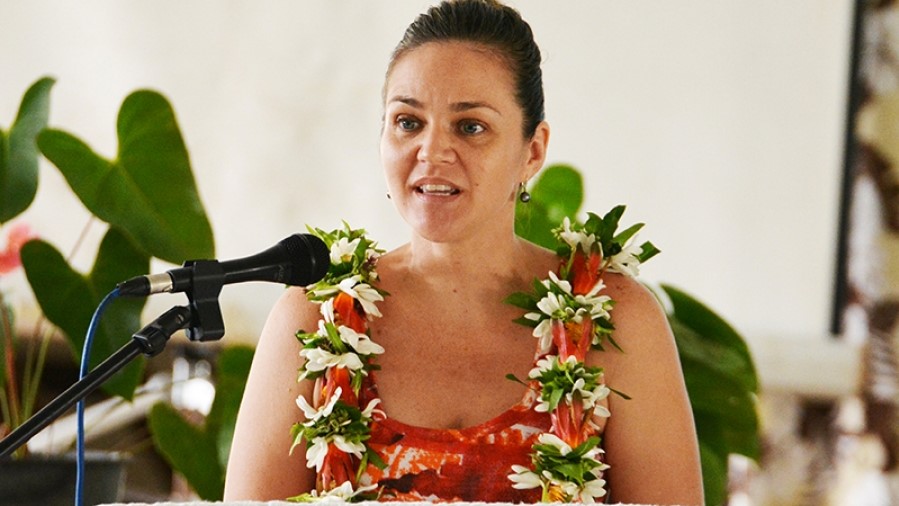
Education ministry secretary Danielle Tungane-Cochrane. PHOTO: CI NEWS/18060505
Cook Islands school teachers have felt the brunt of Covid-19 as growing number of staff and students contract the virus.
Tereora College has been a Covid-19 hotspot. In the middle of this month, the school moved to distance learning for senior students – Years 11 to 13 – because too many staff were in isolation.
“We cannot continue to operate face to face learning with the number of staff we have,” a notice to parents said on March 14.
The number of teachers in isolation has declined and on Tuesday Year 11 students were welcomed back on campus.
Next week, all year levels will be in attendance, except one group who will rotate each day.
According to Tereora College senior teacher Linda Dun, teachers had to work extra hard this term to ensure they delivered to their students.
Dun says being short-staffed put a strain on teachers who needed to cover extra classes.
“Imagine having four teachers from the same subject away sick.
Teachers in that subject have to cover these classes for seven to 10 days,” she says.
“I think that teachers deserve a medal for doing what they do.”
Dun, who is currently in isolation, says she needed to juggle teaching her children at home and students online at the same time.
She “lives” next to her computer and phone at the moment.
Messages from students come via text and email late into the night.
Another senior teacher from the school, Christina Ganivatu, says some aspects of distance learning did not work as well as they had planned.
“Google Classroom worked so well in class when students had access to devices and of course unlimited Wi-Fi.
“Unfortunately, when students were home their ability to access this became limited by the lack of their own devices, especially laptops.”
Financing internet costs was also a problem, says Ganivatu, adding $20 on data every five days was out of the question for many families at the school.
Students making sense of the work they need to complete without teacher assistance was also a roadblock to distance learning.
However, one thing that Ganivatu liked about distance learning was that students who were shy in class felt comfortable asking questions via private messages.
“The ones that asked in class are now the silent or inactive ones.”
Apii Te Uki Ou principal Carly Ave says over a third of the 32 school staff had either spent time in quarantine or isolation.
“When we had our first Covid-19 case within the school, understandably we were all concerned,” says Ave.
“However, now that many of us have experienced Covid-19 and isolation or quarantine, we have quickly adjusted to our new normal.

“I am immensely proud of our staff, they have relieved each other’s classes, shared lunchtime duties and been very flexible.
“I am most proud of how they ensure calm and consistency for our students still attending school.
“It is humbling to watch the collegial support they give one another.”
Every day for the past two weeks there had been staffing challenges, according to Ave.
“It can give a principal sleepless nights, however, we have an amazing senior leadership team who help problem-solve every day, in spreading classes evenly across our teachers and teacher aides.
“No day is the same and it is keeping our organisation skills on point.”
Te Uki Ou Year 9 teacher, Sophia Panzarella, reflecting on her experience in New Zealand during the first 2020 lockdown, says that it was filled with anxiety, which had not been her experience this term.
“This has just felt like a process of getting organised and making what-if plans and that sort of thing,” Panzarella says.
“The last thing you want is for the kids to feel any sense of anxiety coming from you, just kind of carry on as normal.
“That’s the incredible thing here, it feels just like normal at school, it’s pretty bizarre.”
Panzarella says when she got Covid-19, she was in bed for seven days and unable to do anything.
“I was expecting to feel different to how I did in the end, like I thought I was going to be able to have a Panadol and keep going from home when in reality you actually need to stop, it’s quite hard to keep going.”
While sick, other teachers picked up the slack.
Last week Panzarella’s class was reduced to only three students with the others in isolation.
Yesterday she had nine and expects to have a full class next week.
Prime Minister Mark Brown during his Covid-19 address on Monday thanked teachers for their work.
“I would also like to pass on a special meitaki ma’ata to our teachers.
“The work being done by our schools and our teachers to allow homeschooling and still keep schools open while minimising the spread of Covid-19 is much appreciated.”
Speaking to Cook Islands News a week ago, Brown said he did not think schools would close completely.
“I think what we will see is teachers who have been isolating, who have tested positive will recover within seven days, then they will be back at school.
“So I think the schools will continue on as much as possible without wanting to actually shut down.”
Secretary of Education, Danielle Cochrane says despite the increase in cases within the community, teachers remain committed to continuing their learning roles.
Teachers “are going above and beyond their roles to support students, their families and their teaching and school colleagues”.
“Our teachers are extremely resilient and naturally there is added pressure.
“There is a lot of work that goes on behind the scenes that many would not see, but see in increased and regular contact with students and families, quality home-based learning packs, and ongoing wellbeing check-in opportunities.”
The priority is to keep schools safely open and provide as much face-to-face learning as practicable, says Cochrane.
Each school had different strategies employed to safely deliver learning. Strategies in place included internal staff cover when student numbers are low, and relief teachers and rotation of year levels or classes if impacted staff numbers continue to rise.
















